100th Anniversary Great Nave Tour at the Cathedral of St. John the Divine
Celebrate the 1925 construction of the stunning nave inside the world's largest Gothic cathedral!

While “architecture” and Flushing are not two words that are normally associated, we hope you’ll be surprised to find quite a range of unique buildings and structures, ranging from an abandoned movie theater, a wooden Quaker Meeting house, stately government buildings, and the remains of the World’s Fair at Flushing Meadows.
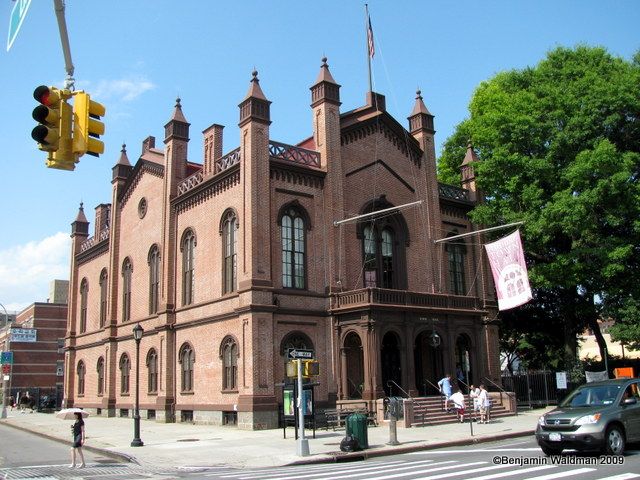
137-35 Northern Boulevard
Opened in 1864 during the second year of the Civil War, Flushing Town Hall served the community with a multitude of purposes, including a mustering site for Union soldiers, a bank, jail, grand ballroom, a public assembly hall, a space for light opera and traveling theatrical productions, a house for civic offices, and finally courthouse until the mid 20th century.
While the town hall received landmark status in 1962 and was placed on the National Registry of Historic Places in 1972 for its early Romanesque Revival architectural style, the building fell into disrepair until the Flushing Council on Culture and the Arts was awarded a full-time lease in 1990 along with restoration funding from the NYC Department of General Services. Check the Flushing Town Hall calendar for the latest art exhibitions, concerts, and other special events.
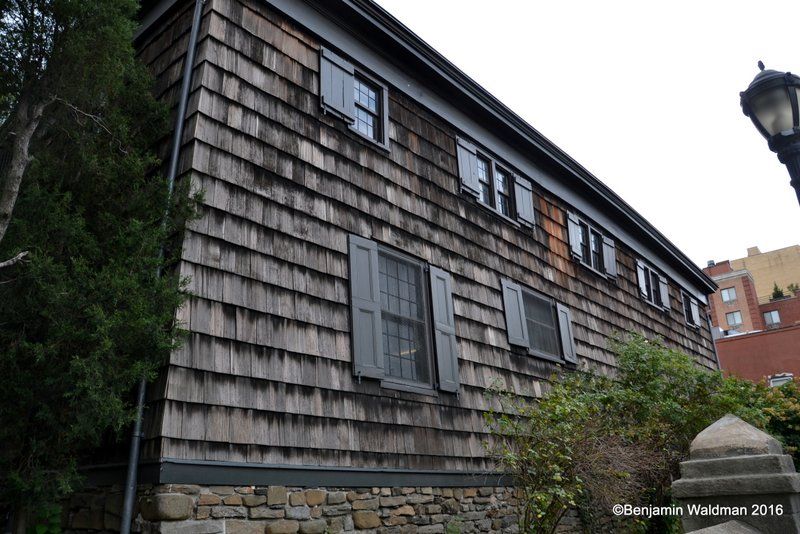
137-16 Northern Boulevard
The Old Quaker Meeting House might seem unassuming from the outside, but the meetings that took place underneath its hand-hewn timber ceiling beams were momentous throughout American history. From producing the earliest documented support for religious freedom in America to helping shape the beginnings of the abolitionist movement, the Religious Society of Friends’ has remained steadfast in their struggle against religious intolerance, slavery, injustice, and violence over the past 300 years.
Built by John Bowne and other early quakers in 1694, The Old Quaker Meeting house still serves as one of the oldest active houses of worship in the United States, with notable guests including George Washington, John Woolman, and William Penn. It also earned national and city landmark status in 1970 for its 17th century ecclesiastical frame structure of medieval design, one of few in the nation and last of its kind in New York. Be sure to catch a tour of the meeting space every Sunday from 12-12:30pm and take a walk by John Bowne’s house around the corner (the 2nd oldest building in NYC!).
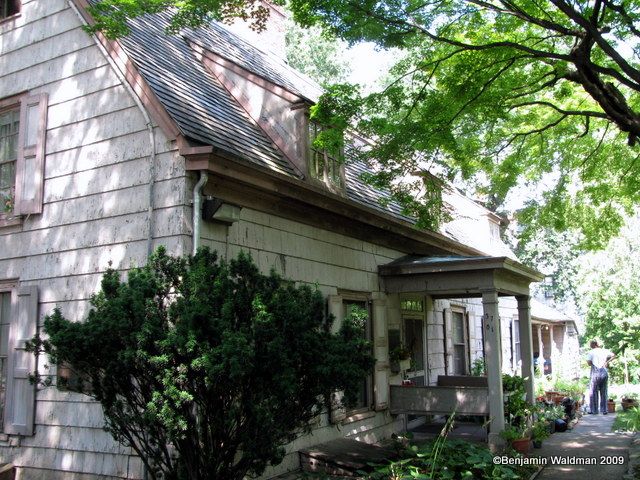
135-35 Northern Boulevard
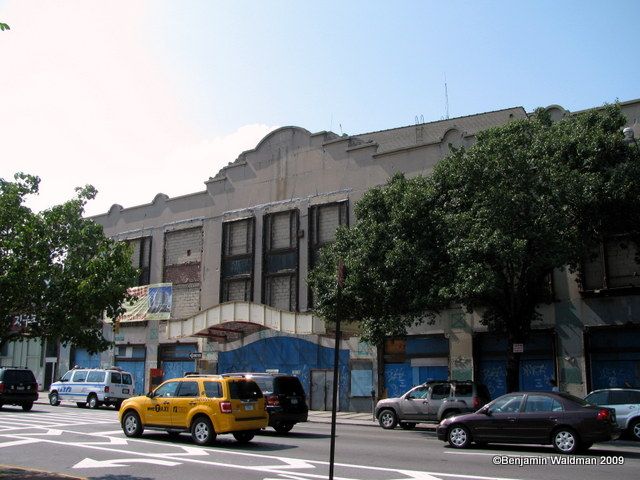
The 3000 seat RKO Keith’s Flushing Theater opened its doors in 1928 and served the neighborhood with a wide variety of entertainment including vaudeville, organ recitals, orchestras, magicians, comedians, and full-length feature films — all for only .25 cents. Built by the famous theater architect Thomas Lamb in the “Mexican Baroque” style, the movie palace has one of the few surviving “atmospheric” theater designs with a blue painted ceiling containing electric lightbulbs for stars and projected clouds.
While the theater’s lobby was landmarked by the Landmarks Preservation Commission in 1983, it closed just three years later and made headlines after the building’s new owner gutted it illegally and dumped 10,000 gallons of waste oil in the basement. The property was sold in 2011 for $20 million to an apartment building developer who promised to restore the theater’s lobby to its original grandeur, but it still sits abandoned with an incongruous new informational sign in front detailing the building’s history.
Corona Park has transformed from its start as an ash, horse manure, and garbage dump in the early 20th century (referred to as the “valley of ashes” in F. Scott Fitzgerald’s The Great Gatsby) to the fourth largest park in New York City that has hosted two World’s Fairs, and is home to the U.S. Open Tennis Tournament, New York Mets, and several prominent museums and theaters. The controversial Parks Commissioner Robert Moses can be given most of the credit as he relocated the mountains of ash into the bases of several surrounding highways in preparation for the 1939-1940 World’s Fair (along with changing the name to Flushing Meadow Park in hopes of defeating the stigmatism that embodied the area for so many years).
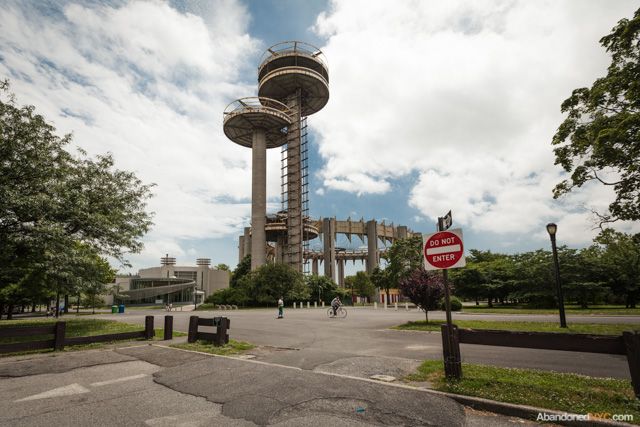
After walking by the endless soccer fields and makeshift BBQs, head over to the iconic Unisphere, which was built by the United States Steel Corporation to symbolize the 1964/1965 World’s Fair theme of “Peace Through Understanding.” Right behind it is the Queens Museum of Art, which houses, and periodically updates, a room sized panorama model of New York City (that’s right, every single building including a tiny model plane that lands and takes off from LaGuardia). To the left of the Unisphere, you’ll run across the Observation Towers that gave fair goers a 226 feet bird’s eye view of the city (while they have been inactive since, they did make headlines again for their appearance in the movie Men in Black, which we recently tracked for its film locations).
These multi-million dollar recreation centers in Flushing Meadows Corona Park were supposed to be the flagship facilities for the 2012 New York City Olympics that never came to be. While the Olympic bid lost out, the funding was already in place to build these absolutely stunning complexes, which include the $66.3 million Flushing Meadows Corona Park & Rink (Olympic size swimming pool and NHL regulation hockey rink), and the $50 million Al Oerter Recreation Center (fitness rooms, dance room, racquetball courts, and an indoor track and gymnasium). Did we mention that since these facilities are a part of the NYC Park & Recreation System, they’re only $150 a year to join? You heard right — and that $150 gets you in any of the 30+ recreation centers across New York City.
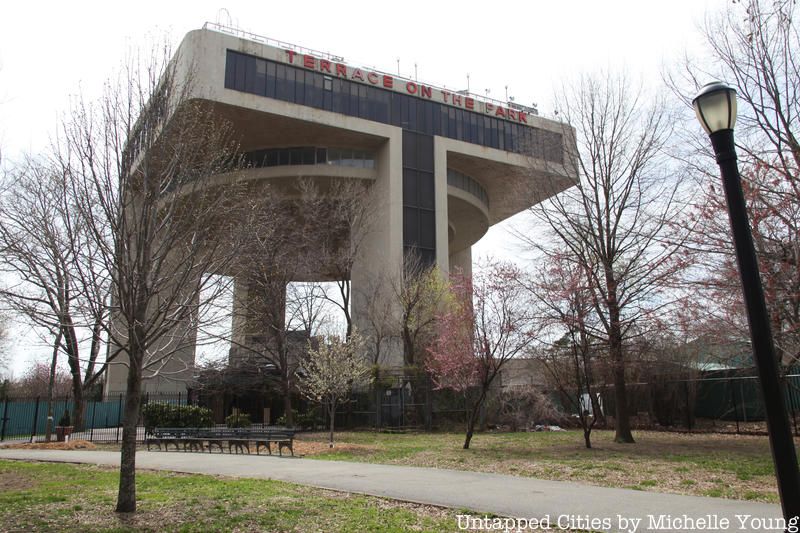
On your way back to Corona Park, it will be hard to miss the elevated building known as Terrace on the Park, which served as the heliport for the 1964/5 World’s Fair. Unlike the Observation Towers, this facility was purchased from the city’s parks department and converted into a private catering hall for special events of all kinds.
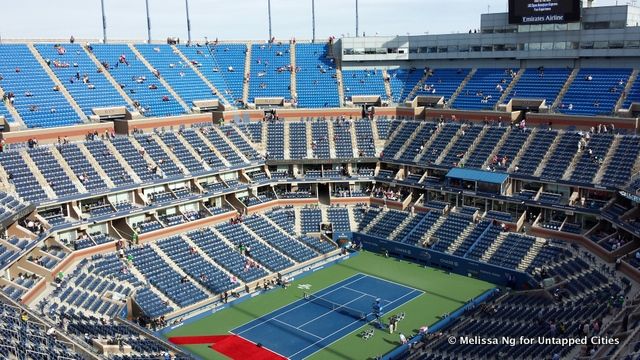 Just before the 2013 Men’s Final at the U.S. Open: Novak Djokovic vs. Rafael Nadal
Just before the 2013 Men’s Final at the U.S. Open: Novak Djokovic vs. Rafael Nadal
Before ending your journey, take a walk past the grounds of the USTA Billie Jean King National Tennis Center, home to USTA events since 1978 and the annual U.S. Open Tennis Championships since 1987. The complex sits on around 47 acres with 33 associated tennis courts, three of which are among the largest tennis stadia in the world (Arthur Ashe Stadium ranks #1 with a capacity of 23,000 spectators). City council recently agreed to a new expansion into the park.
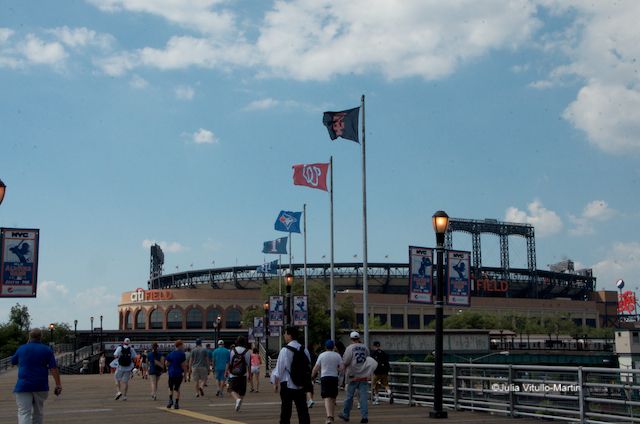
Tour completed, but don’t forget to check out our food guide to the top 10 spots for small bites in Flushing. Hopefully you’ll come back soon to discover the endless foodie and sightseeing options Flushing has to offer — stayed tuned for our next neighborhood guide.
Subscribe to our newsletter